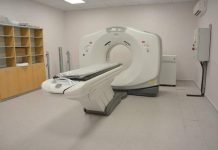What are the causes/risk factors of breast cancer? What is considered high risk for breast cancer? The risk of breast cancer by age.
Cancer of the breast is the most common malignancy affecting women in many pans of the world. Globally it
accounts for 18.4% of female cancers. It is estimated that one in 8 Caucasian women (one in 14 blacks) in the USA (double the risk in 1940) and one in 12 in Britain will develop cancer of the breast in their lifetime and the incidence is rising.
In the USA, lile incidence since 1982 has been rising by 4.5% per year. In 2002 there were 1,151,298 new cases worldwide, 514,072 of them in developing countries, 410,712 deaths and more than 4.4 million women living with the disease. Of the developed countries, Japan has the lowest incidence – one in 60 women in their lifelime – and the death-rate is about 30% of that in Britain.
But as in other developed countries it is rising rapidly. In Nigeria, it is currently the commonest malignancy in Ibadan.
In Accra, Ghana, it accounts for about 16.0% of all cancers, being now the commonest cancer in the female. About 400 new cases are diagnosed yearly in Korle Bu Teaching Hospital. In Kenya, it constitutes about l9.4 % of all cancers in women, in Zimbabwe 8.5%, in Tanzania about8.1 %, in Sudan 26.0%, in Malawi5.5%, in Liberia 15% and in Uganda 4.0%.
With the rising life expectancy and the increasing standard of living, cancer of the breast is becoming a major problem in Africa. But in China the incidence in the urban population is rising rapidly.
In the Far East generally, carcinoma of the breast is rather uncommon.
Although the incidence is rising in the West, the mortality has been reducing since the 1990’s due to early detection of the disease and improved adjuvant therapy .
Causes/Risk factors of breast cancer
The cause of breast cancer remains unknown. Epidemiologically, however, there arc certain associated factors which influence the risk in a woman developing the disease .
1. Age
Risk of developing cancer is most related to age. It is rare before 20 and 2 % of all cases are aged 20-30. The incidence then rises steadily from 30 to 80 years before it becomes flat.
In the USA the incidence in the 8th decade is 300 cases per 100,000.
2 . Family history, most important of the risk factors of breast cancer
There appears to be an inherited predisposition to cancer of
the breast. A woman whose grandmother, mother, aunt, or sister, i. e. a first degree relative, has had the disease is at greater risk (twice the incidence) than one without such a family history. If two or more such close relatives are affected, the risk is very significant. The children or sisters of a woman who develops bilateral breast cancer have a 50% chance of having the disease between 20 and 40 years. Those with a high risk ( i.e. risk > 8% of developing breast cancer between ages 40-50years or > 30% in their life-time) are people with (a) four or more relatives (at least one being a first- or second- degree relative) with breast cancer at any age (b) three first – or second -degree relatives affected with breast cancer before 60 years or (c) two first or one first – and one second – degree relatives affected before an average age of 50 years.
It must be pointed out, however, that eight out of nine patients who develop breast cancer do not have an affected mother, sister or daughter.
Hereditary breast cancer, characterized by early age of onset, high incidence of bilateral disease, multiple cases in one side of the family and associated with ovarian, colonic or prostate (in men) cancer, accounts for 5% of all breast cancers.
It is in 90% of cases due to > 200 mutations ofBRCA 1 or 2 gene (chromosomes 17 and 13 respectively) inherited as autosomal dominance. Such women have an estimated risk of breast cancer from 65-85 % for BRCA1 and 40-85 % for BRCA2 compared to 12% in the general American population.
A premenopausal woman with breast cancer and no BRCA1 mutation has a 10% risk of developing cancer in the contralateral breast at 50, but 50% risk if she has BRCA1 mutation. Twelve per cent of patients who develop cancer before 40 years have BRCA mutation.
Breast cancers associated with BRCA1 are usually of high grade invasive ductal type with negative ER,PR and HER-2 and so are more aggressive with poorer prognosis than sporadic cancers. Other genes are the ATM, P’TEN, CHEKl, LKBI andp.53. Less frequently encountered are the androgen receptor and HNPCC genes.
The gene PTEN, like p53, regulates the growth ofeells. It is a tumour suppressor gene. But when its double strand DNA breaks and it is not repaired, it becomes disabled and inactivated (mutation) and it is not able to check cell growth leading to the development of cancer.
BRCA gene co-ordinates the repair of damaged DNA strands of PTEN. Cells lacking BRCAI (i,e . breast cells with BRCA mutation) are not able to repair damaged PTEN. This allows thecel! to continue to grow and ultimately to fonn basallike cancer which is aggressive and fast-growing and lacks receptors for oestrogens, progesterone and HER-2 (triple negative tumours). About 50% of patients with BRCA I associated breast cancer have PTEN mutations suggesting that other gene mutations arc involved. There are, however, modifying aetiolog ical factors – genetic, hormonal, dietary or environmental – which may influence the cancer causing ability of the BRCA mutations.
3. Endocrine factors
(i) Age of first menarche and menopause: Women with early
menarche (before 12) or late menopause (at 55 or later) have
one and a half times greater risk than those with menarche at normal age or menopause by 45. Castration before 35 or early menopause reduces the risk, it being about half that of the normal population. The prognosis is also better in such patients. Late menarche also reduces the risk.
(ii) Age of first pregnancy and nulliparity: The age of first pregnancy is important, those having the first child at 18 or less being more protected (half the risk) than those having it after 30. The risk, and especially of postmenopausal carcinoma, is tripled when the first birth occurs after 35. Nulliparity increases the risk and unmarried nulliparous women have a greater risk than those who are married.
Breast feeding for a long duration and increased parity reduce the risk.
(iii) Oestrogens: It is highly probable that breast cancer is closely associated with oestrogens. This is supported by the increasing risk with age, longer period of menstrual activity
(early menarche and late menopause), nulliparity and late first childbirth and the fact that about 70% of tumours are oestrogen dependent. The incessant high levels of oestrogens excite
breast cell proliferation and increase the number of mutant (cancer) cells.
Women on hormone replacement therapy (HRT for more than 5 years have a slightly increased risk of breast cancer- 2 cases per 1000 – and ovarian cancer. However, the tumour is
small and confined to the breast.
The risk disappears 5 years after cessation of HRT. HRT increases the risk of cardiovascular disease but improves osteoporosis as well as the general
health of the patient. Women who have taken combined contraceptives and stopped after 10years, have a small increased risk of developing breast cancer. But the tumour is less clinically advanced
than normal. However, oestrogen was used in the past for palliation in postmenopausal patients with advanced breast cancer with considerable improvement in about a third of the patients.
4. Previous breast cancer
The incidence of breast cancer is 16 times higher in patients who have been ‘cured’ of cancer of one breast. Thus 15% and 16% of patients who survive 20 and 30 years respectively after treatment of breast cancer develop cancer in the other breast.
About 6% of all patients have had treatment for cancer of the opposite breast.
5. Benign mammary dysplasia
Whether this condition is precancerous or not is disputed. However, cancer of the breast is four times as common in breasts with B.M.D. as in normal breasts. If the epithelial
hyperplasia is mild (2-4 epithelial cells in depth), there is no risk of cancer. If the hyperplasia is moderate or florid, solid or papillary, the risk is slightly increased (1.5-2 times).
But if there is atypical hyperplasia, (atypical ductal hyperplasia), then the risk is moderately increased (5times). Co-existence of a family history increases the risk 9 times.
Papillomas, especially the peripheral ones, increase the risk of invasive breast cancer. But papillomas with atypical hyperplasia either within or outside of the papilloma increase
the risk in the same breast much more so.
6. Cancer of the corpus uteri and ovary
The risk of breast cancer is double in patients with previous cancer of the endometrium or ovary probably because of a common underlying hormonal or BRCA influence.
7. Diet and Fat Intake
Breast cancer rates correlate with the amount of fat in the diet. Thus the incidence is high in the USA, Britain, Switzerland and Denmark, countries with a high fat-rich diet (38-42 % of calories) and low in Japan, a country with a low fat intake (< 25 % of calories).
However, in Japan there was nearly 60% increase from I975 to 1985 due, it is believed, to “westernization” of the diet with increase in the fat intake. It is predicted that carcinoma of the breast may become the number one cancer killer in women in Japan this century tfthe present trend continues. Intake of animal fat mainly from red meat and high fat dairy foods before the menopause appears to increase the
risk of breast cancer.
People with high fat intake have a higher risk than people with low fat intake probably because of higher production of oestrogens and other steroids. It has been shown that when fat intake is reduced to 20% calories intake, the oestrogen level
falls by 20%.
There is increasing evidence, however, that fat intake may not be a risk factor. Weight control and physical activity appear to reduce the risk of the disease.
Regular alcohol consumption also increases the risk most probably from increased production of oestrogens.
8. Smoking
Smoking per se is not a risk factor. But there is a genetic defect that predisposes to breast cancer. It is twice as common in Caucasians as in other races. Women, who have the genetic defect and smoke, develop breast cancer four times more often than the general population. Because of the genetic defect, they are not able to detoxify the carcinogens in cigarette.

Credit: The Conversation
Source: Principles and Practice of Surgery by Badoe
























